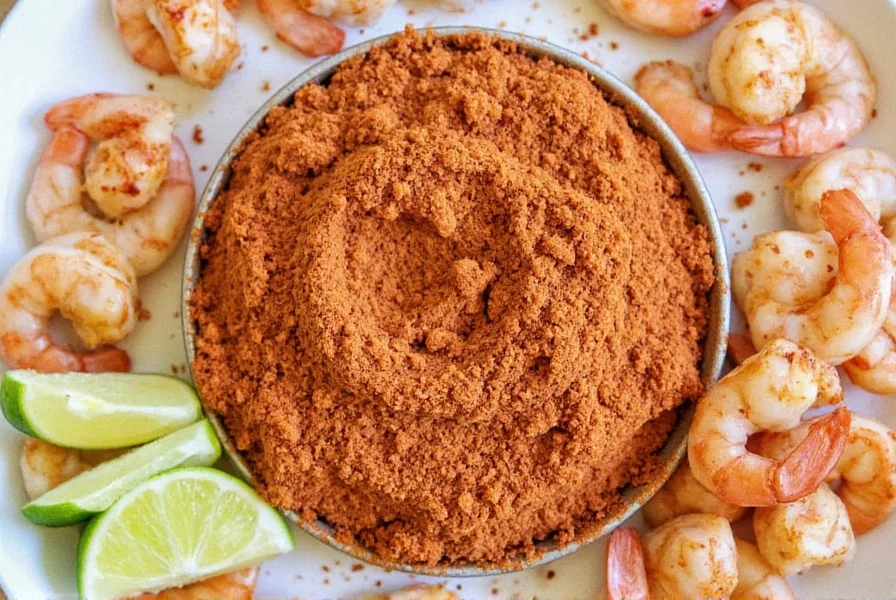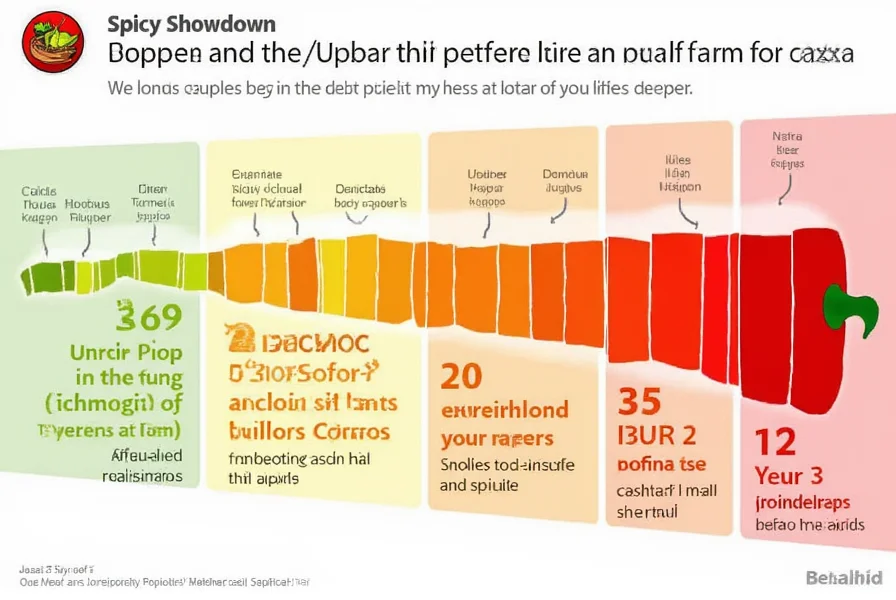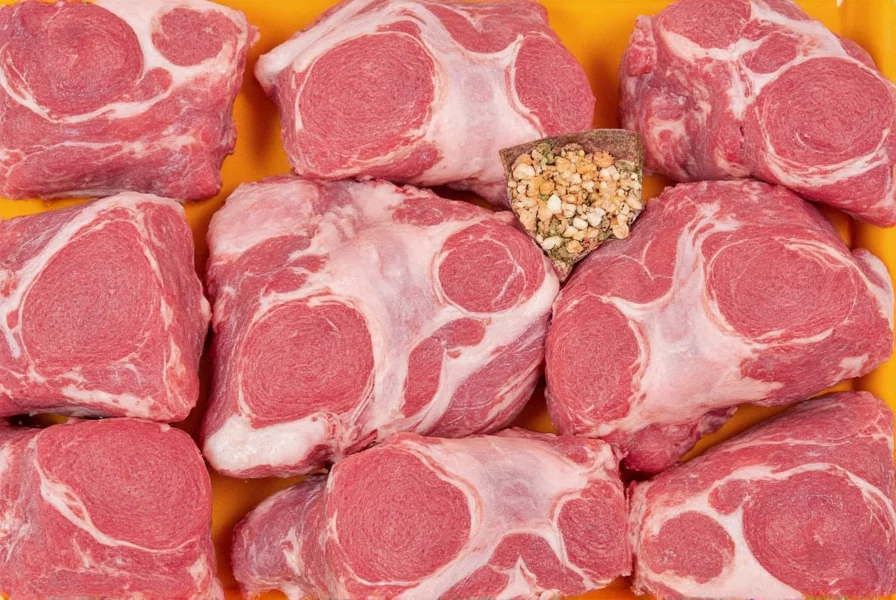Chili seasoning typically contains these key spices: dried chilies (ancho, chipotle, cayenne, guajillo), cumin, paprika, oregano, garlic powder, onion powder, salt, and black pepper. Each ingredient contributes uniquely to the flavor and heat profile.
Table of Contents
What Spices Are in Chili Seasoning?
Chili seasoning is a blend of dried chilies and complementary spices that create complex flavor profiles. Here's a detailed breakdown of core ingredients:
- Dried Chilies – Form the foundation, with ancho (earthy/sweet), chipotle (smoky), cayenne (hot), and guajillo (fruity) providing varied heat levels.
- Cumin – Adds warm, earthy depth that balances heat.
- Paprika – Contributes sweet smokiness without significant heat.
- Oregano – Provides herbal bitterness to balance sweetness.
- Garlic Powder – Enhances savory umami notes.
- Onion Powder – Adds mild sweetness and rounds out flavors.
- Salt – Acts as flavor enhancer and unifier.
- Black Pepper – Adds subtle complexity and warmth.
Spice Comparison Table
| Spice | Flavor Profile | Heat Level | Best Used In |
|---|---|---|---|
| Ancho Chile | Earthy, sweet, smoky | Mild | Stews, sauces, marinades |
| Cayenne | Sharp, spicy, tangy | Hot | Spicy dishes, hot sauces |
| Chipotle | Smoky, spicy, slightly sweet | Medium-Hot | BBQ, dips, stews |
| Guajillo | Winy, fruity, slightly spicy | Mild-Medium | Marinades, salsas, soups |
| Cumin | Warm, nutty, earthy | None | All spice blends, meat dishes |
| Paprika | Smoky, sweet, mild | None | Seasoning blends, smoked foods |

Understanding the Flavor Profile
Chili seasoning's complexity comes from balancing heat with depth. Dried chilies provide primary spice, while cumin, oregano, and paprika add layered flavors. Garlic and onion powders contribute savory richness, and salt ensures harmony. Regional variations may include coriander, cinnamon, or cloves for additional complexity.

Cooking Tips for Using Chili Seasoning
Maximize chili seasoning's versatility with these techniques:
- Use as dry rub – Sprinkle directly on meats or vegetables before grilling or roasting.
- Stir into sauces – Add 1-2 teaspoons to tomato-based sauces, stews, or chili for depth.
- Make custom blends – Adjust chili types and spice ratios to match your heat preference.
- Pair with acids – Combine with lime juice, vinegar, or citrus zest to brighten flavors.
- Control heat levels – Substitute hotter chilies with milder varieties like ancho for reduced spice.

Buying Guide: How to Choose the Best Chili Seasoning
Top Chili Seasoning Brands and Products
- McCormick Chili Seasoning
- Features: Classic blend of chilies, cumin, garlic, and oregano
- Advantages: Affordable, widely available, consistent quality
- Use Cases: Cooking, baking, seasoning meats and veggies
- Target Audience: Home cooks and casual users
- Suitable Occasions: Weeknight dinners, family meals, casual gatherings
- Penzeys Spices Chili Powder
- Features: Made from ground ancho and guajillo chilies
- Advantages: Natural, no additives, rich flavor
- Use Cases: Salsas, stews, spice blends
- Target Audience: Enthusiasts and culinary professionals
- Suitable Occasions: Special occasions, gourmet cooking
- Trader Joe's Chili Seasoning
- Features: Balanced mix of spices including cumin, paprika, and garlic
- Advantages: Great value, high-quality ingredients
- Use Cases: Grilled chicken, beans, chili recipes
- Target Audience: Budget-conscious cooks
- Suitable Occasions: Everyday meals, potlucks, picnics

Frequently Asked Questions About Chili Seasoning
What spices are typically included in chili seasoning?
Traditional chili seasoning typically contains a blend of dried chilies (like ancho, chipotle, or cayenne), cumin, paprika, oregano, garlic powder, onion powder, salt, and black pepper. Some variations may also include coriander, cinnamon, or cloves for additional complexity.
What's the difference between chili powder and chili seasoning?
Chili powder is typically just ground dried chilies, while chili seasoning is a complete spice blend that includes chilies plus other spices like cumin, garlic, and oregano. Chili seasoning is ready to use in recipes, whereas chili powder is just one component of a seasoning blend.
How can I make my own chili seasoning at home?
Making your own chili seasoning is simple! Combine 2 tablespoons chili powder, 1 tablespoon cumin, 1 teaspoon paprika, 1 teaspoon garlic powder, 1 teaspoon onion powder, 1 teaspoon dried oregano, 1/2 teaspoon black pepper, and 1 teaspoon salt. Adjust the proportions to suit your taste preferences and desired heat level.
How spicy is chili seasoning?
The spiciness of chili seasoning varies widely depending on the types and amounts of chilies used. Most commercial blends range from mild to medium heat. You can control the heat level by adjusting the ratio of mild chilies (like ancho) to hotter varieties (like cayenne). Remember that other spices like cumin and paprika don't add heat but contribute to the overall flavor complexity.
What dishes work best with chili seasoning?
Chili seasoning works wonderfully in a variety of dishes including chili con carne, taco meat, enchilada sauce, stews, soups, and even on roasted vegetables. It's excellent as a dry rub for meats before grilling or smoking, and can be added to bean dishes, cornbread, or even sprinkled on popcorn for a spicy kick.

Conclusion
Chili seasoning is a carefully crafted blend where each spice plays a distinct role in creating complex flavors. Understanding these ingredients helps you select the right blend for your dishes and customize recipes to match your taste preferences. Whether you're making tacos, stews, or grilled meats, knowing what's in your chili seasoning unlocks its full culinary potential.











 浙公网安备
33010002000092号
浙公网安备
33010002000092号 浙B2-20120091-4
浙B2-20120091-4